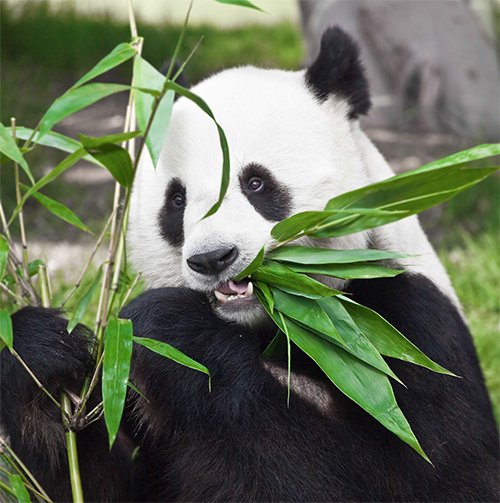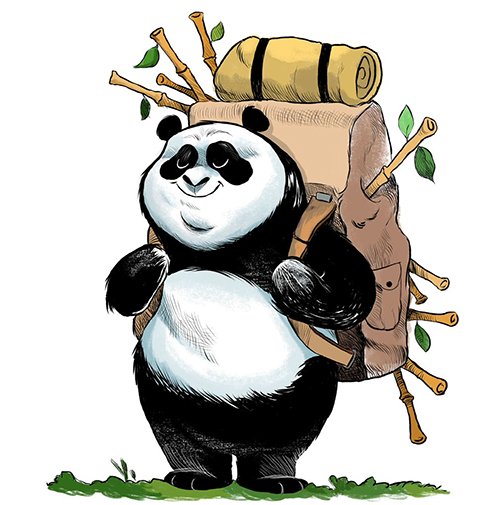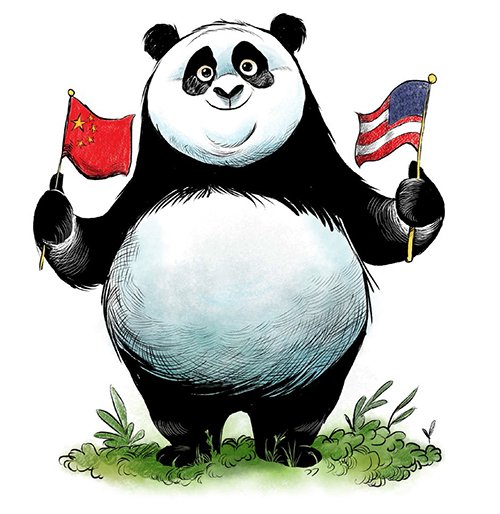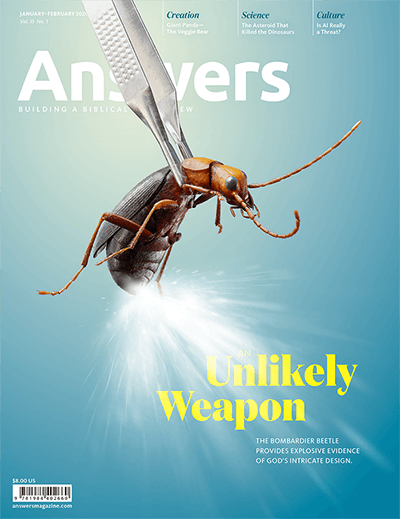Giant Panda: The Veggie Bear
How can a bear live on plants? Surprisingly well.
Four years ago, a friend gave me a stuffed giant panda as a reminder of our trip to see the pandas at the Smithsonian National Zoo in Washington, DC. We waited in line for almost two hours to spot Tian Tian and Mei Xiang. When we finally reached the enclosure, I eagerly pressed my face against the glass and watched the adorable bears stuff bamboo shoots into their mouths. I couldn’t get over their contentedness as they munched away without a care in the world. Then a question struck me: “How can these huge bears live on plants instead of meat?”
When God created land animals on day six of creation week (Genesis 1:24–25), the bear kind, like all other animals, ate only vegetation. But after Adam’s sin, carnivorous behavior entered the world along with death. While some animals, like horses, elephants, and cows, still thrive on an herbivorous diet, other animals, like cats, bears, and wolves, depend on meat to survive.
As the bear kind diversified after the worldwide flood, the panda again adapted to a mostly herbivorous diet like its ancestors in Eden. Scientists aren’t sure why the panda has plant-eating ways. But creation scientists know that God originally created the bear kind to eat plants in the prefall world, and he has equipped pandas to survive on a plant-based diet now.
Body by Bamboo
For about 14 hours a day, the panda eats and eats and eats some more. To understand why it consumes so much, we need to inspect what it’s munching on. Bamboo, a tall wooded grass, comprises 99% of the panda’s diet (the other 1% includes small animals and eggs). But grass is full of cellulose, which bears cannot digest well because they lack enzymes and bacteria found in the long guts of most herbivores like cows. The cellulose keeps the panda from absorbing protein well because it has a short digestive tract like other bears. To compensate for the limited nourishment, the panda must eat more bamboo—up to 40 pounds (18 kg) every day.

Unlike other carnivores, pandas are specially adapted to eat mostly bamboo—up to 40 pounds a day.
The modern panda has adapted special features for putting away so much grub. Two of its wrist bones are enlarged, giving the panda six fingers on both front paws. These extra digits function like thumbs to rapidly tear bamboo and shovel it into its mouth.
The panda’s adorable round face comes courtesy of its enlarged jaw muscles, which are perfect for chewing through mouthfuls of thick, fibrous bamboo (up to 1.6 inches [4 cm] in diameter).
Even the panda’s throat is suited for a bamboo buffet, with a tough lining to protect it from splinters.
You Are What You Eat
For a long time, researchers focused on the low amount of protein and other nutrients in the panda’s exclusive diet of bamboo. But a recent study found that the panda’s diet of bamboo provides the same balance of nutrients as the diet of a meat eater (ignoring the fiber). It is high in protein and low in carbohydrates—much closer to a carnivore’s diet than that of other plant-eating animals. Pandas migrate during the year, hunting the most protein-rich bamboo shoots available.
Though the panda isn’t chowing down on prey, nutritionally bamboo still looks like a kind of meat. (They just need double portions because of all that extra fiber.) The panda, it turns out, lives somewhere between carnivore and herbivore.
Many researchers believe the panda changed its diet as lush bamboo forests spread through central Asia and meat sources became less available. These new studies help explain how the panda was able to change its diet quickly with simple changes to its body, such as larger jaw muscles and a bump on its wrist. It didn’t need a whole new gut and enzymes.
Problem-Free Philosophy
The panda’s laid-back lifestyle also allows it to thrive on a bamboo diet. Far from lazy, its lackadaisical approach to just about every aspect of life is a great way to conserve energy. As solitary creatures, they avoid expending energy socializing. They move slowly and sleep often. With few natural predators to fear, pandas will conk out just about anywhere—on the forest floor, next to a tree, or on a branch.
Even reproduction reflects their energy-saving behaviors. Panda cubs are born the size of a butter stick. Such tiny tots take a lot less energy to produce, and the panda’s body can convert bamboo nutrition to milk better than to extra tissue necessary for a larger cub. But the tiny cub still requires constant attention and care. If a panda gives birth to twins, she will often leave one to die rather than spend the extra energy.
Bearing the Effects of the Fall
Sin affects every creature, including this docile bear. The panda has been on the endangered list for decades, though conservation efforts have lowered its risk of extinction to "vulnerable," with an estimated 1,850 pandas remaining in the wild. The main reason for the species’ meager numbers is its low breeding rate, exacerbated by illegal poaching and human encroachment that has driven the panda into isolated mountain regions.
Whenever I look at my stuffed panda toy, I’m reminded of the real panda’s exquisite anomaly, designed with cuddly features like all other bears but expertly equipped to thrive on its unconventional grass diet. The caring Creator equipped all creatures with marvelous traits to survive in our fallen world—and to surprise us with his creativity.
Did You Know . . .

Illustration by DAVE MOTTRAM
Pandas migrate long distances to find the most protein-rich shoots and leaves from two different bamboo species growing at different altitudes at different times of the year.
Rather than roaring, pandas have 11 different calls, including some that sound like a lamb or goat kid.
Pandas spend up to 14 hours a day eating bamboo. Because of their short digestive tract and quick digestion process, pandas eliminate more than 22 pounds (10 kg) of waste a day.
Unlike other bears, pandas don’t store fat to hibernate through cold weather. They eat all year long.
All giant pandas are owned by China. Since as early as the seventh century, the country has shared pandas as diplomatic gifts.
As pandas roam the mountain ranges of central China in search of bamboo, the white and black fur allows them to blend into both snowy backgrounds and shady forests.

Illustration by DAVE MOTTRAM
Answers Magazine
January–February 2020
Unlikely Weapon: The bombardier beetle provides explosive evidence of God’s intricate design.
Browse IssueRecommended Resources

Answers in Genesis is an apologetics ministry, dedicated to helping Christians defend their faith and proclaim the good news of Jesus Christ.
- Customer Service 800.778.3390
- Available Monday–Friday | 9 AM–5 PM ET
- © 2026 Answers in Genesis





